World War II has a nostalgia to it for Americans (and I’m allowed to say this, as I’m an American) that has nothing to do with the horrors that were experienced all over the globe due to a couple of power-hungry men, but all to do with it being “simpler times” in many people’s minds, before the Age of Technology and the great globalization of our world.
This is in great opposition to some of what America considers to be the bad wars, like the almost genocidal status of the Indian Wars or the much-talked-about Vietnam war that ripped teenage boys from their beds unwillingly to impose democracy, freedom, and Western ideals on the encroaching communism of Southeast Asia.
Recommended Reading
US History Timeline: The Dates of America’s Journey
Emancipation Proclamation: Effects, Impacts, and Outcomes
The American Revolution: The Dates, Causes, and Timeline in the Fight for Independence
And while America undoubtedly deserves props for it’s contribution to the bringing the Axis powers down, corporate America may have been undecided about where it’s allegiance was: to money or to the Republic. When American soldiers dragged their boats to the shore in Normandy and faced Gerry for the first time, they may have been greatly surprised to find that June 1944, plenty of Nazi trucks outfitted with engines created by Ford and General Motors.[1] It seemed, to any onlooker, that profit sent supplies to the Fuhrer, with thoughts only for wealth.
Power Recognizes Power
America had long felt sympathetic to Mussolini; the Italian dictator was met with corporate conglomerates from the other side of the pond that were not only sympathetic to his plight but were calling his transformation of Italy the “fine, young revolution.” [2] But when it came to Hitler, big business was more reserved as the German upstart was often billed behind a Socialist bill, which was very anti-capitalist. One such big name that was a fan of Hitler, in the beginning, was Henry Ford, but he certainly wasn’t alone. [3] Other big names that followed Hitler’s progress, even as far back as the 1920s, included Randolph Hearst and Irenee Du Pont, even going as far as providing for him financially. [4]
This fascination with Hitler lead to many American investments in Germany; by 1930 about twenty big names in the US were connected, such as Coca-Cola, General Electric, IBM, Singer, Goodrich, and Gillette, just to name a few. But it wasn’t just corporations, because soon the banks followed, including J.P. Morgan, the Union of New York, and Sullivan & Cromwell. The most shocking of all these facts was the father of George Bush Sr., Prescott Bush, who made his fortune in Nazi contracts that later led to the president’s oil money and financing for his presidential campaign. [5]
While American investments in the German economy did poorly during the 1930’s—as the Great Depression had devastating effects in Europe as well as the US—the corporations still profited from the political atmosphere and the low wages. Coca-cola’s production and bottling in Essen, with workers that were little more than “serfs” who were working in poor conditions with no flexibility or freedom to change jobs, and salaries that were kept artificially low by the government to entice business to be conducted there.
[6] Any attempts to protest these conditions by the workers resulted in transfers to the Gestapo, or worse. Fear of being sent to concentration camps made the German workers obedient, and this continued to increase the American profits that were tied to Hitler’s country. [7]
Stock Market Strategy
The next thing that enticed American money was Hitler’s answer to the increasingly worsening economic climate. A remedy that was a mix of Keynesian philosophy, Hitler created a state-mandated demand on goods that increased productivity and thereby profit for his American friends. What was sent into production was undeniably war equipment, and with a looming Nazi war and big bills from the suppliers racking up, the only possible outcome could be Nazi victory.
Henry Ford was one such American that benefited from German government contracts, as well as GM’s Opel location in Russelshein, with reported earnings of increased production due to rearmament being upwards of 13 million USD for the entire year of 1938. [8] But it wasn’t only war machines that brought profit up; the stockpiling of oil meant big profit for Texaco, and IBM benefited from the Nazi use of the punch-card machine. It was this fact, the incredible returns on investment in Germany, and not Hitler’s purported charisma that led to the high regard for the Third Reich and its economic prowess in the 1930s.
The Devil You Know
With the Great Depression raging on throughout the thirties in the US, unforeseen bumps in the road began to complicate the already low profits. Labour activists, Communists and other radicals came out of the cracks in the system to introduce Socialist ideas into the capitalist framework of the country, and Germany’s staunch republic proved to be something many American conglomerates looked to as a good example of a healthy economy.
Likewise, the German obsession with antisemitism was not harshly ridiculed by the Americans, as racism for non-whites and those of Jewish heritage was also fairly common on the other side of the Atlantic, despite ancestral ties to a Jewish past. [9] And although Hitler claimed to be a Socialist, his ideology was for pure, Aryan Germans and a national Socialism, which was at odds with much of Marxist ideology, Bolshevik communism and what contemporaries have called “Jewish” international socialism. [10]
Latest Government Articles
How the Federal Parliamentary Labor Party Lost Its Way
The Brief: A Short Story on English Legal Codification
Nazis & America: The USA’s Fascist Past
This all in relation to the political nature at home, including Roosevelt’s New Deal, created a perceived hostile atmosphere for many corporations that considered Roosevelt’s attempts to bolster the economy as unhealthy, and unconstitutional, meddling. As Hitler was enacting in Germany, many CEOs were wishing that fascism would make its mark on the United States and oust the devil of Roosevelt’s “Jew Deal” and his undercover Communist agenda. [11]
What War?
Germany’s rearmament during the 1930s fooled no one into thinking that war wasn’t going to happen, many just thought Hitler was planning on going after the Soviets instead of Western Europe. Those companies who may have pretended that war wasn’t Hitler’s intention were no longer using ignorance as their excuse for continuing business with Germany as the thirties continued to push on. However, the Soviets created common ground for many Western business leaders; Germany, as well as the capitalist West, saw the Soviets as the ultimate threat to their globalized free markets.
When the British, French, and American appeasement tactics didn’t work on Hitler however, the Fuhrer started to doubt the motives of the West, signed agreements with Stalin, and went to attack France and Great Britain rather than the Soviet Union. But despite these turn of events, the idea that Germany would lead a revolution against communism on behalf of the Allies never quite died, and even so, the profit made by American countries during the 1930s was so astronomical that the fact they had helped Hitler wage war against themselves mattered very little. [11]
The War Wages
Hitler’s blitzkrieg was a matter of military genius, and American supplies of diesel fuel, petroleum products, and other materials. Tanks, trucks, planes, rubber and sophisticated communication systems poured out of US borders straight to Germany or through third party countries to aid the war effort, but not on the Allied side. [12] And while war waged in Europe, parties were thrown stateside of Hitler’s victories, and then for their own gain, as Roosevelt’s push for tanks, planes, and other military supplies meant profits on the home front were going to prove incredibly profitable as well. Henry Ford was quoted by his biographer as saying that he “hoped neither the Allies nor the Axis would win” so that he could produce munitions for both sides of the war, and rake in all of that outstanding profit. [13]
Supplying to multiple sides of the war continued for the US, as the Lend-Lease Agreement with Moscow meant Soviets would receive aid as of November 1941, and unlike the negotiations with Nazi Germany, these agreements were sanctioned by Washington, extending American product marketability even further. While this proved problematic for Hitler, it wasn’t until America declared war on Japan after the attack on Pearl Harbour on December 7, 1941, and forced his hand to declare war against the US only 5 days later. [14]
Even the involvement of America in the European war had little effect until after Germany had been defeated in 1945. Despite declaring war, the Nazis made no attempt to confiscate any assets, and throughout the war companies like GM remained sole proprietors of their German outposts. [15] And many experts believe that the best and brightest technological advances of the time from Ford and GM, along with others, went to benefit Germany rather than the US.
Such examples include Opel 4-wheel drive, the first jet fighters, and the development of turbines for V-2 rockets. [Research Findings, 41-2]. The biggest discovery? None of the money made from American-owned plants made it into German hands; it was all retained by the company owners, and sometimes was made at the hands of forced concentration camp workers. [16]
While the everyman may have not been aware of GM’s dealings with the Nazi’s, Washington wasn’t so naive. However, the government was willing to turn a blind eye to the proceedings under the notion that “what is good for GM is good for America.” And thus, America financed the war for the Axis powers.
Post-War Proceedings
As America has interests in the fate of Germany after the war ended, the US was in a good position to help determine the direction of the country. Among the leaders of the administration in Germany after their surrender were representatives of companies like GM and ITT, and their sole appointment was to ensure that corporate America continued to benefit financially from the investments in Germany. [17]
While contemporaries of the time believed that returning Germany to an unarmored state, with a farm-based, non-industry based economy was the swiftest way to make the country virtually harmless as a potential foe, this was not in America’s best interest financially. While these plans were disregarded, they did have other consequences.
Shortly after the end of the war, while figuring out what to do with war-torn Europe, there was a large feeling of anti-fascism, and by extension, anti-capitalism, that worried the big corporations that were invested in German profit. Grassroot associations, anti-fascist groups, and “bottom-up” democratic ideas began popping up, meaning the Americans had their work cut out for them to quickly reinstate an authoritative, conservative regime that allowed for working conditions that favored American profitability. [18] They did this by hiring Nazi leaders that aligned with their aims, and once they were back within the structure, things could go back to normal; making lots and lots of money.
While it is certain that fascism and pure capitalism go hand and hand, and that the atrocities of World War II were unprecedented on such a global scale, it is undeniable that there was money to be made in the German economy throughout the war years, and that America was the beneficiary of this particular climate.
Explore More Government Articles
Nazis & America: The USA’s Fascist Past
How the Federal Parliamentary Labor Party Lost Its Way
The Brief: A Short Story on English Legal Codification
The History of Hardwicke’s Marriage Act of 1753
Mao and Fanon: Competing Theories of Violence in the Era of Decolonization
The History of Divorce Law in the USA
Not only could American corporations make money like in no other place in the world under Hitler’s Third Reich, even after Pearl Harbour, but America has pursued capitalism and monetary gain in other fascist regimes including Spain, Portugal, Greece, Chile, and many Latin American countries after WWII, effectively confirming that no matter what atrocities were to befall, the bottom line is always the bottom line.
READ MORE:
When, Why, and How did the US enter WW2
References:
- Michael Dobbs, “US Automakers Fight Claims of Aiding Nazis,” The International Herald Tribune, 3 December 1998.
- David F. Schmitz, “‘A Fine Young Revolution’: The United States and the Fascist Revolution in Italy, 1919–1925,” Radical History Review, 33 (September 1985), 117–38; and John P. Diggins,Mussolini and Fascism: The View from America(Princeton 1972).
- Neil Baldwin, Henry Ford and the Jews: The Mass Production of Hate (New York 2001), especially 172–91.
- Charles Higham, Trading with the Enemy: An Exposé of The Nazi-American Money Plot 1933–1949 (New York 1983), 162.
- Webster G. Tarpley and Anton Chaitkin, “The Hitler Project,” chapter 2 in George Bush: The Unauthorized Biography (Washington 1991). Available online at <http://www.tarpley.net/bush2.htm>.
- Mark Pendergrast, For God, Country, and Coca-Cola: The Unauthorized History of the Great American Soft Drink and the Company that Makes It (New York 1993), 221.
- Knudsen described Nazi Germany after a visit there in 1933 as “the miracle of the twentieth century.” Higham, Trading With the Enemy, 163.
- Stephan H. Lindner, Das Reichskommissariat für die Behandlung feindliches Vermögens im Zweiten Weltkrieg: Eine Studie zur Verwaltungs-, Rechts- and Wirtschaftsgeschichte des nationalsozialistischen Deutschlands (Stuttgart 1991), 121; Simon Reich, The Fruits of Fascism: Postwar Prosperity in Historical Perspective (Ithaca, NY and London 1990), 109, 117, 247; and Ken Silverstein, “Ford and the Führer,” The Nation, 24 January 2000, 11–6.
- Henry Ford, The International Jew: The World’s Foremost Problem (Dearborn, MI n.d.); and Higham,Trading With the Enemy, 162.
- Aino J. Mayer, Why Did the Heavens not Darken? The Final Solution in History (New York 1988).
- Neil Baldwin, Henry Ford and the Jews: The Mass Production of Hate, 279; and Higham, Trading With the Enemy, 161.
- Anita Kugler, “Das Opel-Management während des Zweiten Weltkrieges. Die Behandlung ‘feindlichen Vermögens’ und die ‘Selbstverantwortung’ der Rüstungsindustrie,” in Bernd Heyl and Andrea Neugebauer, ed., “… ohne Rücksicht auf die Verhältnisse”: Opel zwischen Weltwirtschaftskrise and Wiederaufbau, (Frankfurt am Main 1997), 35–68, and 40–1; “Flugzeuge für den Führer. Deutsche ‘Gefolgschaftsmitglieder’ und ausländische Zwangsarbeiter im Opel-Werk in Rüsselsheim 1940 bis 1945,” in Heyl and Neugebauer, “… ohne Rücksicht auf die Verhältnisse,” 69–92; and Hans G. Helms, “Ford und die Nazis,” in Komila Felinska, ed., Zwangsarbeit bei Ford (Cologne 1996), 113.
- David Lanier Lewis, The Public Image of Henry Ford: an American Folk Hero and His Company (Detroit 1976), 222, and 270.
- James V. Compton, “The Swastika and the Eagle,” in Arnold A. Offner, ed., America and the Origins of World War II, 1933–1941 (New York 1971), 179–83; Melvin Small, “The ‘Lessons’ of the Past: Second Thoughts about World War II,” in Norman K. Risjord , ed., Insights on American History. Volume II (San Diego 1988), 20; and Andreas Hillgruber, ed., Der Zweite Weltkrieg 1939–1945: Kriegsziele und Strategie der Grossen Mächte, 5th ed., (Stuttgart 1989), 83–4.
- Helms, “Ford und die Nazis,” 114.
- Kugler, “Das Opel-Management,” 57; Kugler, “Flugzeuge,” 72–6, quotation from 76; and Billsteinet al., 53–5.
- Higham, Trading With the Enemy, 212–23; Carolyn Woods Eisenberg, “U.S. Policy in Post-war Germany: The Conservative Restoration,” Science and Society, 46 (Spring 1982), 29; Carolyn Woods Eisenberg, “The Limits of Democracy: US Policy and the Rights of German Labor, 1945–1949,” in Michael Ermarth, ed., America and the Shaping of German Society, 1945–1955 (Providence, RI and Oxford 1993), 63–4; Billstein et al., 96–97; and Werner Link, Deutsche und amerikanische Gewerkschaften und Geschäftsleute 1945–1975: Eine Studie über transnationale Beziehungen (Düsseldorf 1978), 100–06, and 88.
- Silverstein, “Ford and the Führer,” 15–6; and Lindner, Das Reichskommissariat, 121.
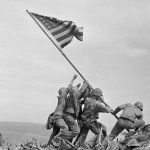

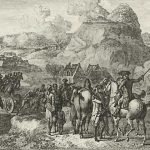
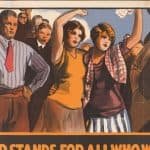
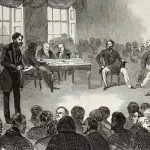


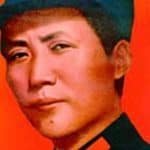
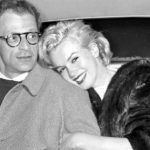
David Hogg and his Hitler youth movement, with the help of Hollywood and Corporate America has brought back Fascist Socialism to the United States. The Bush family has never cast aside what dear Prescott taught them.
The political war in America to overthrow the 2nd Amendment and the US Constitution lends evidence to this. Only Communists and Fascists wish to disarm a law abiding citizenry.
America is now repeating the History of the rise of Communist Soviet Russia married with the rise of Fascist Nazi Germany on its own shores.
Nazis were RIGHT